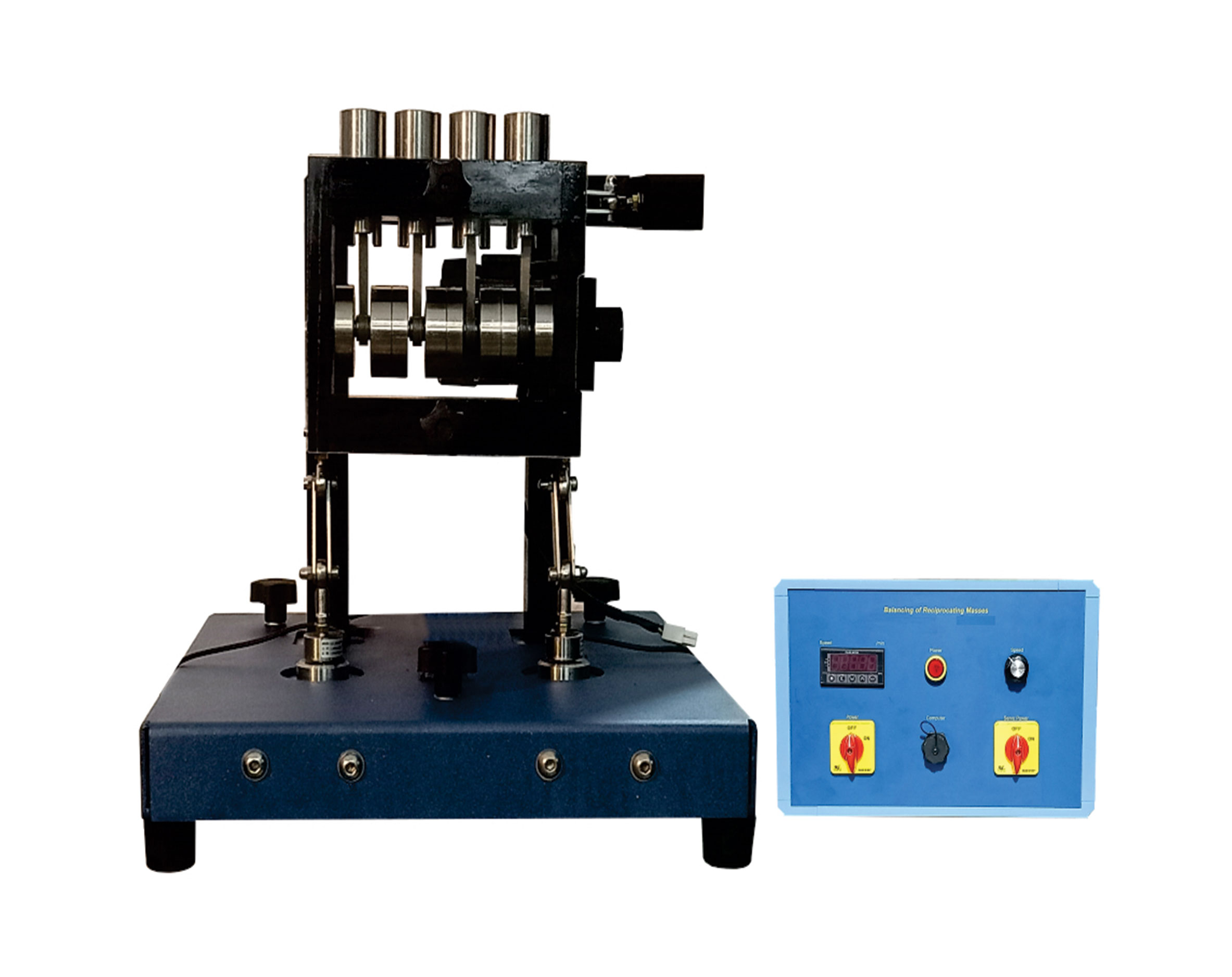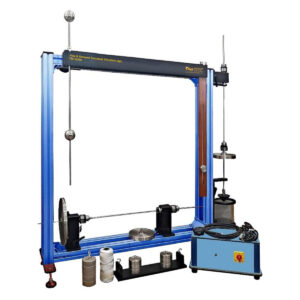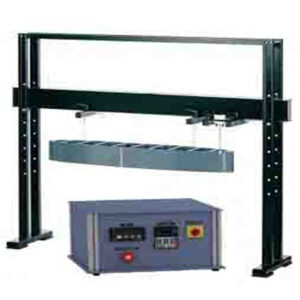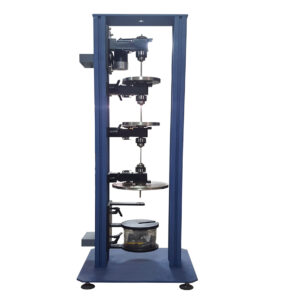The model is constructed around a fourcylinder engine held on a cantilever and sturdy base. The cantilever is mounted on a vertical pillar. The engine includes crankshaft, connecting rods, pistons, and non-metallic cylinder liners. The non-metallic lined cylinders prevent the need for Lubrication. Different cylinder arrangements can be achieved between 4, 2 and 1. The cantilever arrangement has a number of strain gauges attached to measure combined bending and torsion being applied during engine running. This then allows the forces, torques and moments to be calculated. The strain gauges have an output to the data acquisition oscilloscope for vibration monitoring. A DC motor drives the crankshaft between 100 and 3000rpm. The speed is electronically controlled within the unit by using a precision frequency generator and digitally displayed. Each piston has the ability to have its mass adjusted by adding or removing weights. These weights are securely fixed during engine running. Individual crank angle adjustment can be achieved with angular graduations at 0, 90, 180 and 270°. All tools, additional piston masses, connecting cables, and power leads are supplied. All rotating elements of the machine are stored away behind transparent safety covers, allowing full protection whilst ensuring visibility of the experiment and components. A comprehensive instruction manual for students and trainer, giving full details on apparatus assembly and operation as well as example results. All necessary assembly and operational tools are provided.
Experiments
- To allow the investigation and measurement of oscillating and rotating masses on a Four Cylinder model Engine.
- Comparison of different crank arrangements: Four cylinder, symmetrical.
- Four cylinder, unsymmetrical Two cylinder,180° crank offset Single cylinder
- Effect of adding or removing cylinder masses to balancing of engine.
- The use of strain gauges within a model engine.
Specifications
- 4 cylinders Motor speed 100…3000rpm.
- Nominal power output:80W.
- Anti-vibration mounted base.
- Model engine mounted on strain gauged cantilever.
- Cylinder block to be fitted with transparent walls as guard for the moving parts.
- Comprehensive instruction manual provided.




